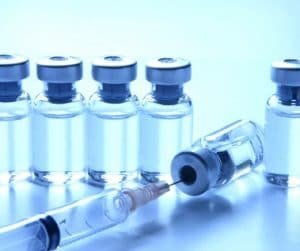USP 797 Compliance Update
USP 797 Compounding Compliance Update:
 USP 795 and USP 797 compliance are not as frequently talked about recently, yet they are as important as ever. It is now five years since the New England Compounding Center (NECC) tragedy brought compounding specialty pharmacies to the attention of the media and the US public. Compliance to USP 797 had always been a must for all compounding pharmacies to address in regards to strict adherence in their policies and procedures manuals and operating standards. Looking back we can see that much has changed since 2012, when one of the worst public pharmacy related health tragedies in our nation’s history occurred. The fungal meningitis outbreak was traced to tainted steroid injections compounded by the New England Compounding Center (NECC) and resulted in 64 deaths and 753 sickened, according to the CDC (Centers for Disease Control and Prevention).
USP 795 and USP 797 compliance are not as frequently talked about recently, yet they are as important as ever. It is now five years since the New England Compounding Center (NECC) tragedy brought compounding specialty pharmacies to the attention of the media and the US public. Compliance to USP 797 had always been a must for all compounding pharmacies to address in regards to strict adherence in their policies and procedures manuals and operating standards. Looking back we can see that much has changed since 2012, when one of the worst public pharmacy related health tragedies in our nation’s history occurred. The fungal meningitis outbreak was traced to tainted steroid injections compounded by the New England Compounding Center (NECC) and resulted in 64 deaths and 753 sickened, according to the CDC (Centers for Disease Control and Prevention).
What Has Changed Regarding USP 797 Compliance
The primary answer in what has changed is that there is now much stricter legislation, regulation and monitoring of compounding pharmacies on both the both the federal and state levels.On the federal level, in 2013 the DQSA (Drug Quality and Security Act) was passed by the US Congress. Prior to the DQSA, the FDA was limited in their abilities to monitor pharmaceutical compounding operations in regards to inspections, regulating and overseeing the manufacturing facilities operating procedures. Now the game has changed with the requirement that compounding facilities producing in bulk and shipping across state lines must register with the FDA. This law gave the FDA a great deal of power to ensure that compliance to best manufacturing standards were strictly being adhered to. Additionally, the DQSA allowed the the FDA the power to inspect and penalize operations failing to comply.On the state level, medication compounding operations and facilities were placed under stricter regulations by each state's Board of Pharmacy. Every state incorporated more up to date compounding requirements regarding USP 795 and 797 operations. This included the strengthening of their regulations, increasing inspection standards and legislation for additional compliance regulations for compounding pharmacies that even included increased criminal penalties for many violations.The results of the changes have been numerous. Although there has still been several instances of recalled compounded medications over the past five years, no significant incidents have occurred since the 2012 tragedy. The public's confidence in the integrity of the compounding pharmacy profession is at an all-time high. Over sixty compounding operations are now FDA approved and the majority of states have more qualified inspectors in place to monitor the compounding facilities.
USP Tests and Assays Chapter 797, Pharmaceutical Compounding, Sterile Preparations
Yet compounding as a specialty pharmacy now creates a couple of questions that many pharmacies must address:- If you operate a community pharmacy that compounded non-sterile medications on a very limited basis, do you stop? Or do you spend resources to ensure compliance?- Is high risk sterile compounding worth the effort? One has only to look at what happened in Massachusetts (where the New England Compounding Center was located) to see that many are saying no. Before the NECC fiasco there were over two dozen high risk sterile compounding pharmacies. Today there are only two!Yet various studies to date have shown that many compounding pharmacies have been slow to react to the guidelines of USP 797 regarding compliance. The most often cited reasons include:– Leadership’s lack of knowledge &/or support– Financial and budgetary restrictions– Physical plant limitations– Lack of available training & competency resources– Time required to implement changesTo help our clients and anyone involved in a Pharmacy Compounding business, HCC would like to share the following Risk Level Assessment guide that recently was published in the United States Pharmacopoeia—National Formulary (USP-NF) entitled “USP Tests and Assays Chapter 797, Pharmaceutical Compounding, Sterile Preparations.” This deals with new requirements for the compounding, preparation, and labeling of sterile drug preparations and applies to health care institutions, pharmacies, physician practices, and other facilities that prepare or compound sterile preparations.
| Pharmacy Compounding–USP <797> Risk Level Assessment | ||
| Risk Category | Requirements, Guidance & Examples | |
| Immediate-Use |
|
|
| Low-Risk Level |
|
|
| Low-Risk Level with <12 Hour Beyond Use Date |
|
|
| Medium-Risk Level |
|
|
| High-Risk Level |
|
|
If you are a compounding pharmacy, the time to get into compliance is now! Do not let small issues with regulatory compliance turn into serious threats to YOUR pharmacy. Be pro-active regarding the requirements to the USP 797 guidelines. With over 27 years of experience, Healthcare Consultants has been known as a national leader in regards to pharmacy consulting since 1989. Let us help you ensure that your compounding pharmacy or operation has no issues by contacting us today for a complete Compliance Review. Reach us online or call today at 800-642-1652.
